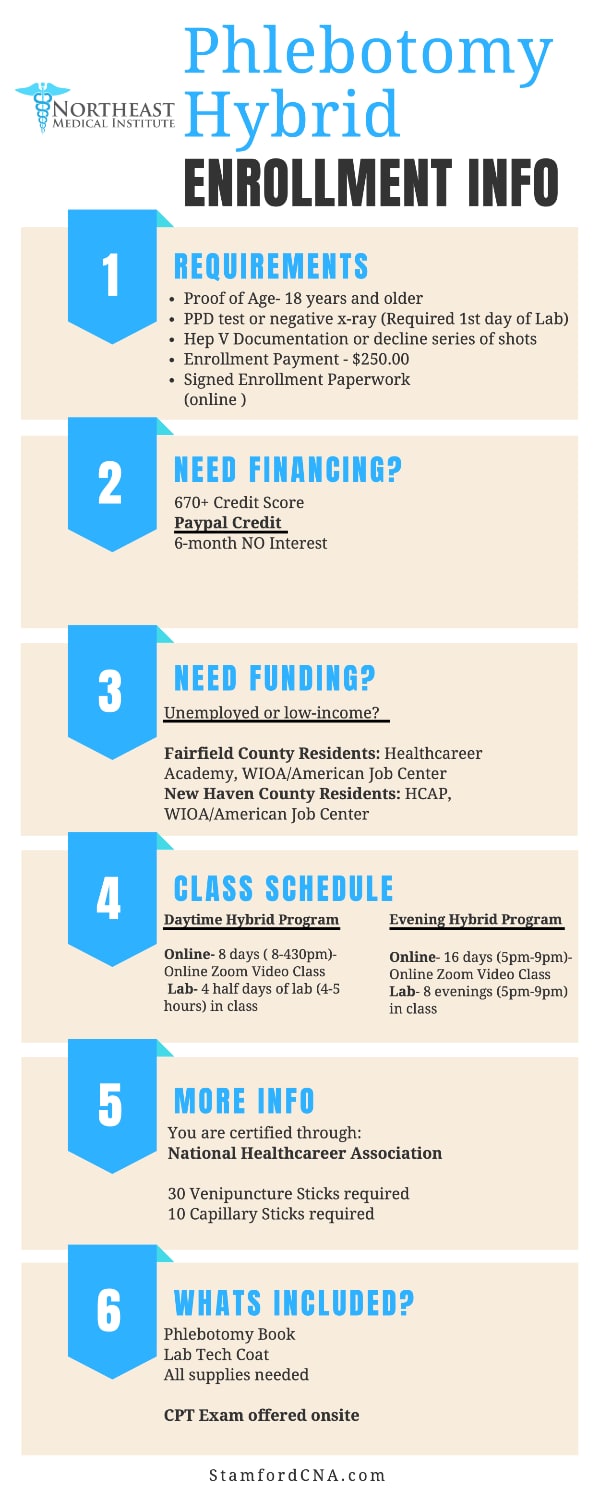4 Easy Facts About Northeast Medical Institute - New Haven Campus Phlebotomy Course & Cna Class Described
4 Easy Facts About Northeast Medical Institute - New Haven Campus Phlebotomy Course & Cna Class Described
Blog Article
Not known Facts About Northeast Medical Institute - New Haven Campus Phlebotomy Course & Cna Class
Table of Contents5 Easy Facts About Northeast Medical Institute - New Haven Campus Phlebotomy Course & Cna Class ExplainedThings about Northeast Medical Institute - New Haven Campus Phlebotomy Course & Cna ClassThe Basic Principles Of Northeast Medical Institute - New Haven Campus Phlebotomy Course & Cna Class Not known Factual Statements About Northeast Medical Institute - New Haven Campus Phlebotomy Course & Cna Class Northeast Medical Institute - New Haven Campus Phlebotomy Course & Cna Class - An OverviewUnknown Facts About Northeast Medical Institute - New Haven Campus Phlebotomy Course & Cna Class
The use of such devices need to be come with by other infection prevention and control practices, and training in their use. Not all safety and security tools apply to phlebotomy. Before choosing a safety-engineered device, customers must completely investigate readily available devices to establish their proper usage, compatibility with existing phlebotomy techniques, and efficacy in shielding staff and clients (12, 33).For setups with low sources, price is a motoring element in procurement of safety-engineered tools. Where safety-engineered tools are not available, experienced usage of a needle and syringe is appropriate.
labelling); transport problems; interpretation of outcomes for medical management. In an outpatient department or center, provide a committed phlebotomy cubicle containing: a clean surface area with 2 chairs (one for the phlebotomist and the various other for the person); a hand clean basin with soap, running water and paper towels; alcohol hand rub. In the blood-sampling space for an outpatient division or clinic, offer a comfortable reclining sofa with an arm remainder.
The Greatest Guide To Northeast Medical Institute - New Haven Campus Phlebotomy Course & Cna Class
Ensure that the indicators for blood sampling are clearly defined, either in a created procedure or in recorded directions (e.g. in a lab type). Whatsoever times, follow the strategies for infection avoidance and control provided in Table 2.2. Infection avoidance and control techniques. Gather all the equipment required for the procedure and area it within secure and very easy reach on a tray or cart, making certain that all the products are clearly visible.
Present yourself to the individual, and ask the person to state their full name. Inspect that the research laboratory type matches the individual's identity (i.e. match the client's details with the laboratory type, to ensure precise identification).
Make the patient comfy in a supine setting (if feasible). The patient has a right to refuse an examination at any kind of time prior to the blood tasting, so it is crucial to make sure that the individual has comprehended the procedure - PCT Courses.
Get This Report about Northeast Medical Institute - New Haven Campus Phlebotomy Course & Cna Class
Expand the individual's arm and check the antecubital fossa or forearm. Situate a capillary of an excellent dimension that is noticeable, straight and clear.
DO NOT insert the needle where capillaries are drawing away, because this enhances the possibility of a haematoma. The capillary ought to show up without applying the tourniquet. Finding the blood vessel will certainly assist in determining the right dimension of needle. Apply the tourniquet about 45 finger widths over the venepuncture website and re-examine the blood vessel.
Haemolysis, contamination and presence of intravenous fluid and medication can all change the results (39. Nursing personnel and medical professionals might access central venous lines for specimens following protocols. Specimens from central lines carry a danger of contamination or wrong laboratory examination results. It is appropriate, but not perfect, to attract blood specimens when very first presenting an in-dwelling venous tool, prior to connecting the cannula i was reading this to the intravenous fluids.
Examine This Report on Northeast Medical Institute - New Haven Campus Phlebotomy Course & Cna Class
Enable the location to dry. Failing to enable enough contact time raises the risk of contamination. DO NOT touch the cleaned up website; in specific, DO NOT position a finger over the vein to guide the shaft of the revealed needle. It the site is touched, repeat the sanitation. Carry out venepuncture as adheres to.
Ask the individual to form a clenched fist so the blood vessels are much more famous. Enter the blood vessel swiftly at a 30 degree angle or less, and continue to introduce the needle along the vein at the simplest angle of entry - Phlebotomy Courses. Once adequate blood has actually been gathered, release the tourniquet prior to withdrawing the needle
Fascination About Northeast Medical Institute - New Haven Campus Phlebotomy Course & Cna Class
Take out the needle carefully and apply gentle pressure to the website with a clean gauze or completely dry cotton-wool ball. Ask the individual to hold the gauze or cotton woollen in position, with the arm prolonged and increased. Ask the patient NOT to bend the arm, because doing so triggers a haematoma.

Northeast Medical Institute - New Haven Campus Phlebotomy Course & Cna Class Can Be Fun For Everyone
Do not push the syringe plunger because added stress boosts the threat of haemolysis. Where possible, keep televisions in a shelf and move the shelf in the direction of you. Inject downwards into the suitable coloured stopper. DO NOT eliminate the stopper since it will certainly launch the vacuum. If the sample tube does not have a rubber stopper, inject very slowly right into the tube as lessening the stress and rate made use of to transfer the sampling minimizes the danger of haemolysis.

Report this page